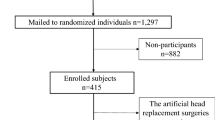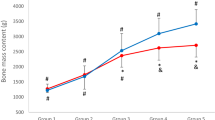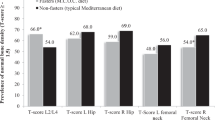Abstract
Objective:To evaluate the changes of the biochemical parameters of mineral metabolism and to assess the effect of these changes on the bone mass of young healthy men who voluntarily lived in the Antarctic Continent for one year.
Design:Lumbar spine and whole body bone mineral density (BMD) were measured pre- and post-campaign (14 months later). Serum and urinary biochemical parameters were measured every two months. Serum levels of calcium, phosphate, total alkaline phosphatase, parathormone (PTH) and 25-hydroxyvitamin D (250HD) were determined in blood fasting samples; and hydroxyproline, calcium and creatinine in 2 h fasting urine. The subjects received a dose of 100 IU/d of vitamin D during May after obtaining the samples and then an average of 125 IU/d from July to January.
Subjects: Seventeen healthy volunteers, who left Buenos Aires during the 1992 summer: ten arrived in the Belgrano II Base at the end of January and the other seven arrived in San Martín in March and stayed there up to summer 1993.
Results:BMD increased in lumbar spine (L2–L4), total body and the subarea of the legs but there were no differences between the pre- and post-campaign values in arms and pelvis. The percentage of fat mass decreased significantly after 1 y of residence in Antarctica, in comparison to the basal values. Most biochemical parameters remained unaltered and within the normal range during the whole study. PTH showed a nadir in March (end of the summer) when compared to initial levels (73.0±28.2 vs 39.9±32.7 pg/ml, P<0.05), and recovered its initial value in spring. Calcium levels showed a significant decrease in March (9.5±0.4 vs 8.5±1.0 mg%, P<0.01). 25OHD levels began to decrease in March (24.7±6.4 vs 18.7±5.3 ng/ml), reaching a minimum value whose difference approached statistical significance during the winter period (July: 16.4±8.2 ml, 0.05<P<0.06). No significant changes in serum phosphate, total alkaline phosphatase, urinary hydroxyproline/creatinine and calcium/creatinine ratios were found through the year.
Conclusions:25OHD levels decreased in autumn and winter (nadir in July) and recovered the initial levels by the end of the campaign. An unexplained marked diminution in PTH and serum calcium was found at the beginning of the campaign. In spite of the low vitamin D levels, bone mass in this group of young healthy men increased, probably because of their intense physical activity.
Sponsorship:Fundación Argentina de Osteología e Instituto Antártico Argentino.
This is a preview of subscription content, access via your institution
Access options
Subscribe to this journal
Receive 12 print issues and online access
$259.00 per year
only $21.58 per issue
Buy this article
- Purchase on Springer Link
- Instant access to full article PDF
Prices may be subject to local taxes which are calculated during checkout
Similar content being viewed by others
Author information
Authors and Affiliations
Corresponding author
Rights and permissions
About this article
Cite this article
Oliveri, B., Zeni, S., Lorenzetti, M. et al. Effect of one year residence in Antarctica on bone mineral metabolism and body composition. Eur J Clin Nutr 53, 88–91 (1999). https://doi.org/10.1038/sj.ejcn.1600681
Published:
Issue Date:
DOI: https://doi.org/10.1038/sj.ejcn.1600681
Keywords
This article is cited by
-
Vitamin D homeostasis, bone mineral metabolism, and seasonal affective disorder during 1 year of Antarctic residence
Archives of Osteoporosis (2013)
-
Skeletal and hormonal responses to sunlight deprivation in Antarctic expeditioners
Osteoporosis International (2009)



